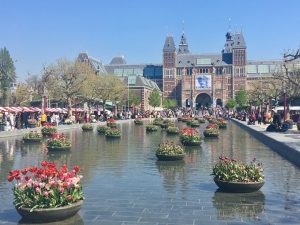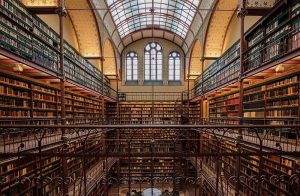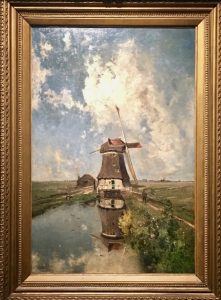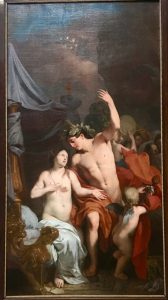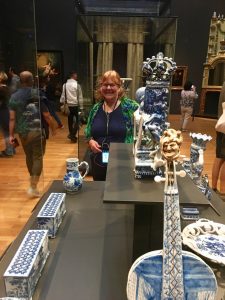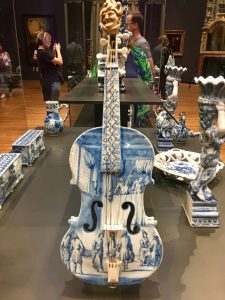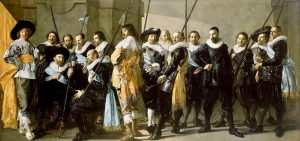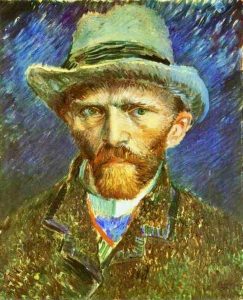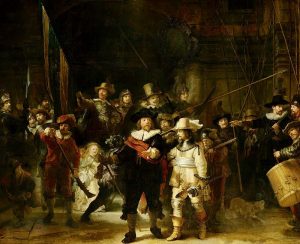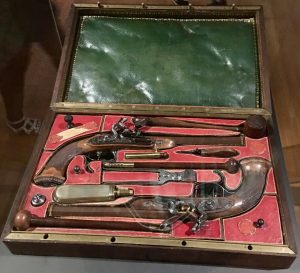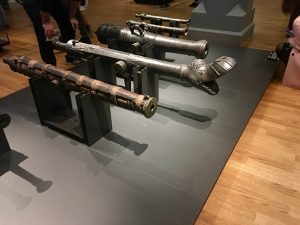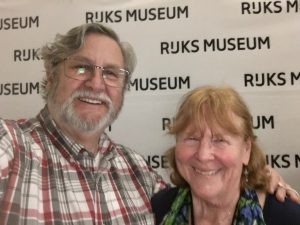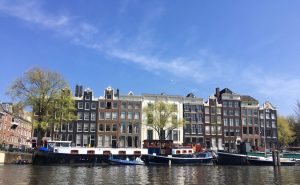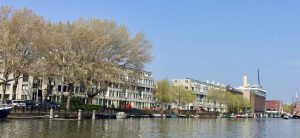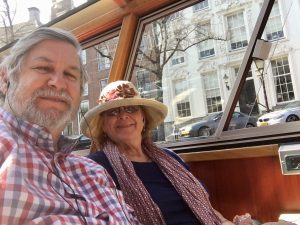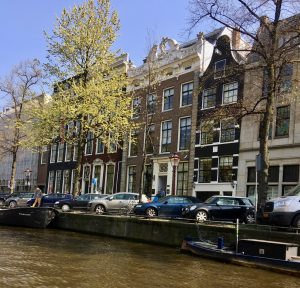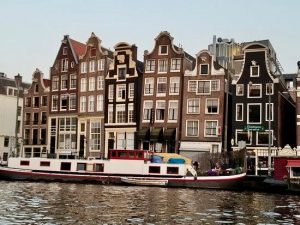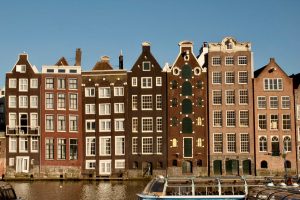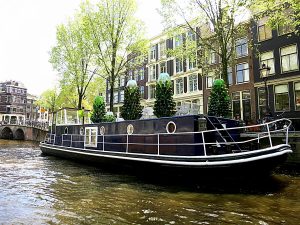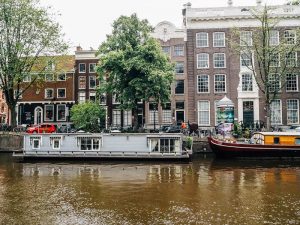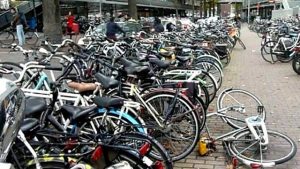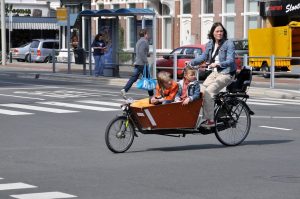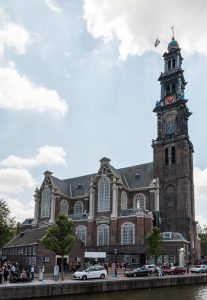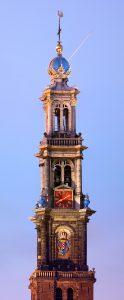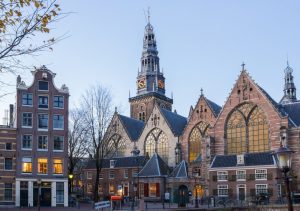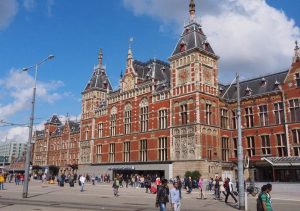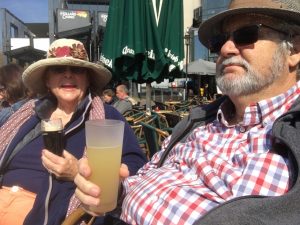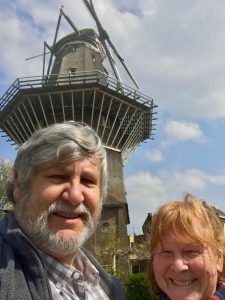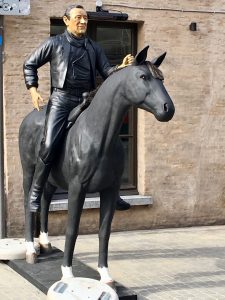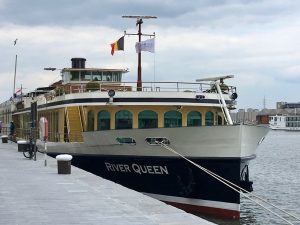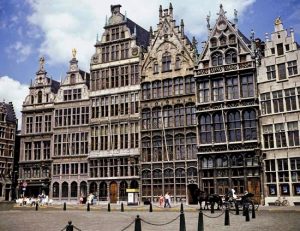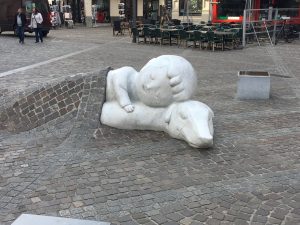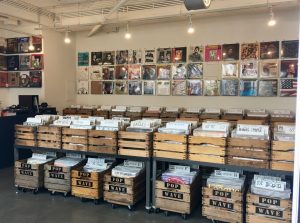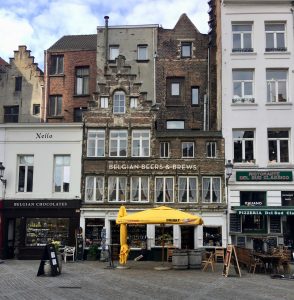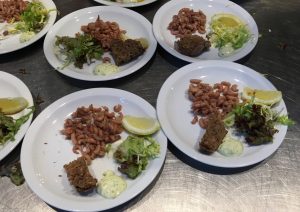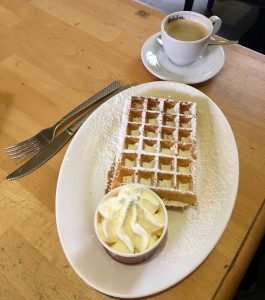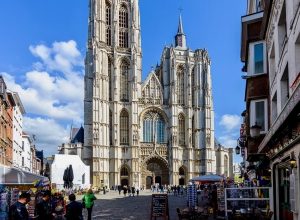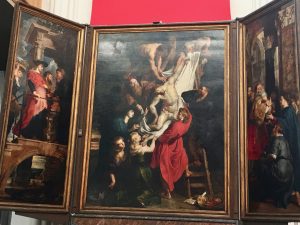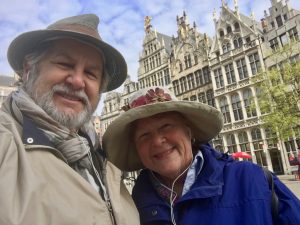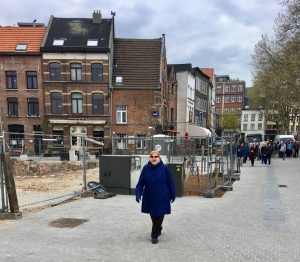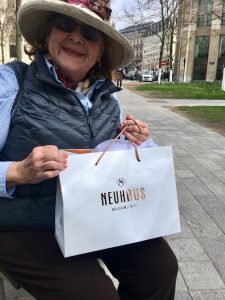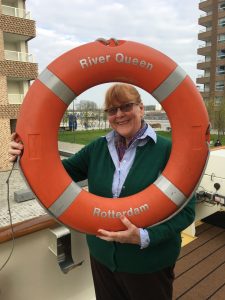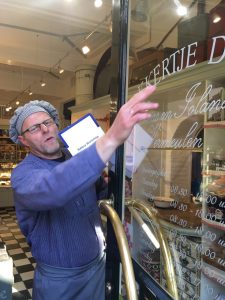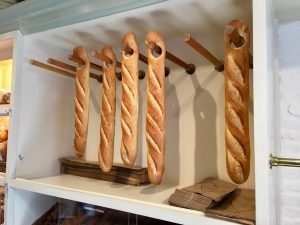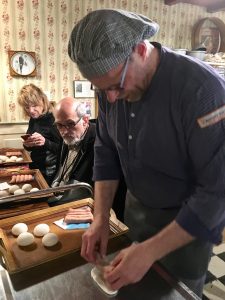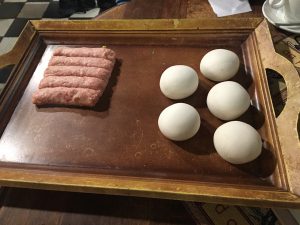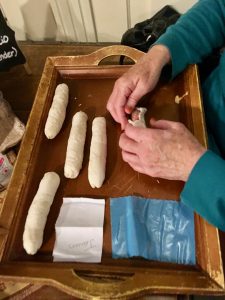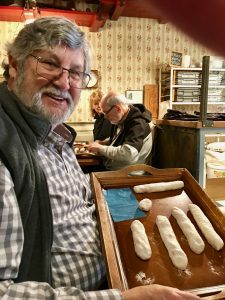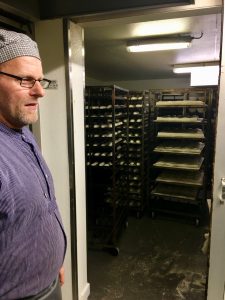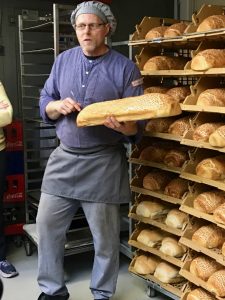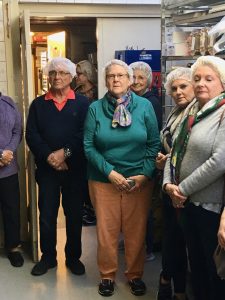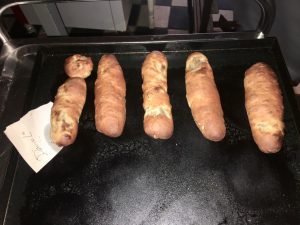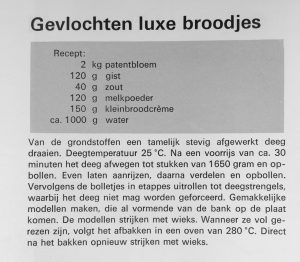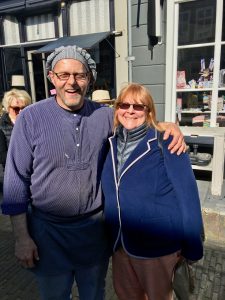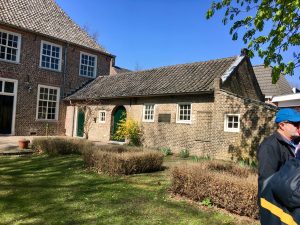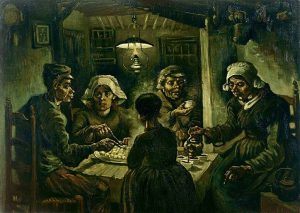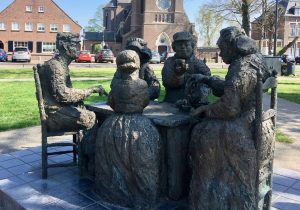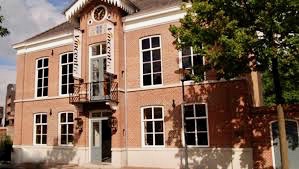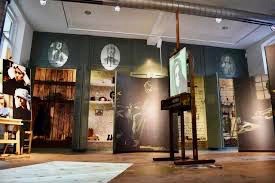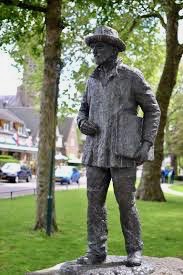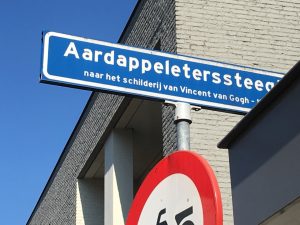On Monday we boarded our new home, The River Empress,
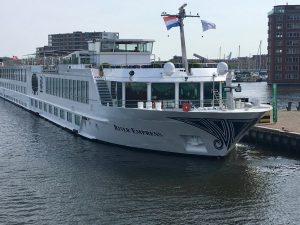
for the next 11-days cruising along various rivers from Amsterdam to Basel Switzerland ,stopping along the way at eight different spots on the rivers. Prior to leaving Amsterdam, however, we were treated to a private visit to the Hermitage Museum. This is an Amsterdam based extension of Russia’s famed Hermitage Museum housed in the former Amstelhof, a classical style building from 1681.
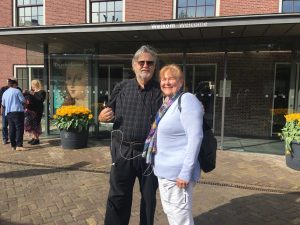
Tsar Peter (1682 – 1725) had a special relationship with Amsterdam, having lived in the city for several years. He founded the very first public museum in Russia, and some of the exhibits at the original Hermitage were items he acquired in the Netherlands. Therefore it only seemed natural to create an extension of the famous Hermitage in St Petersburg in Amsterdam. The Museum was opened about 10 years ago with a rotating exhibit staying for 6-months then being replaced with an entirely new exhibit of items.
One of the first galleries we entered was filled with Old Dutch master paintings.

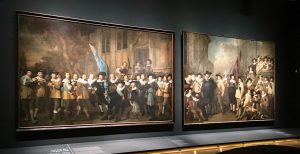
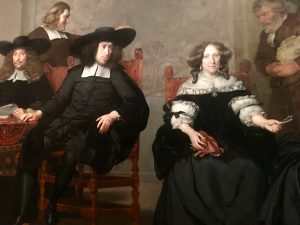
Many of these painted were completed in the late 1600’s and depicted various Guilds of the time. It seems groups of men would band together for a common cause and then want to have their portrait painted to commemorate the group. The person who paid the most was the more important in the painting while those with lesser means were depicted more in the background. The room holding these paintings is huge – as is required to be able to exhibit these paintings some of which are quite large.
Spotlighted exhibits had a couple of paintings, one by Rembrandt depicting dissections.
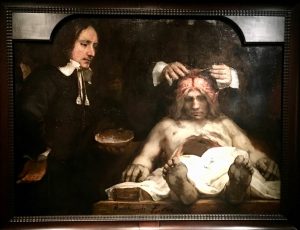
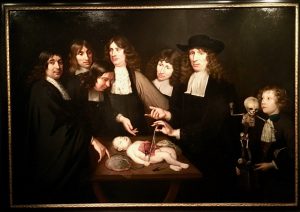
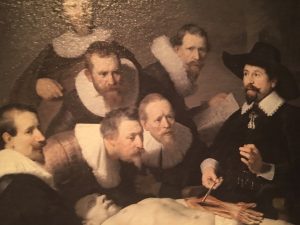
Any criminal or a stillborn child could be used for anatomy dissection, as it was believed they would not be going to heaven.
Around another corner was Donna Nuda – oil on canvas, transferred from panel by Leonardo da Vinci. It seems Catherine the Great bought this painting in 1779 from Sir Robert Walpole as a work by Leonardo.
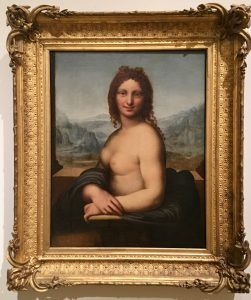
Does anyone look at Her smile?
The Musée Condé in Chantilly, France, has a drawing that bears many similarities to this work and that Leonardo specialists largely attribute to the master himself in 2017. Over ten versions of the Donna Nuda exist in various collections. The Hermitage version is the best of them all.
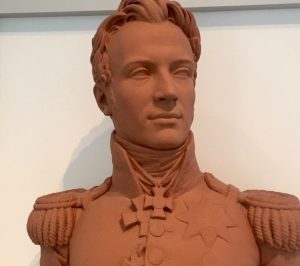
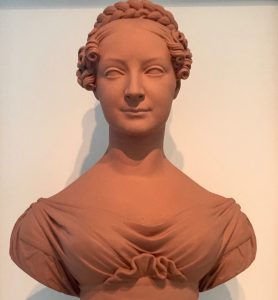
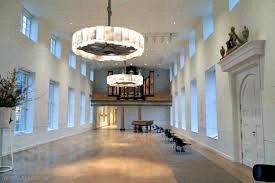
Next was an exhibit of the Green Room Malachite pieces which helped make up the Malachite room in the royal Russian palace.
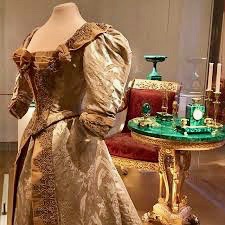
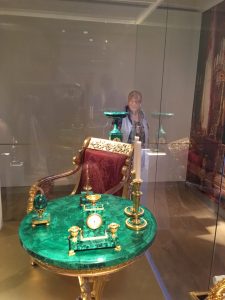
The stone was considered to be therapeutic for stress relief. It was where all royal princesses were prepared for marriage.
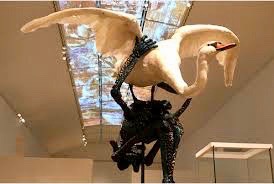
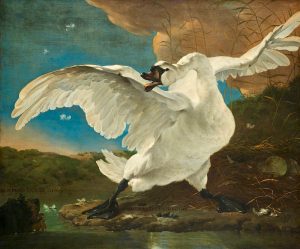
We had the place basically to ourselves for a few hours and it was lovely for sure. The central exhibit contrasted ancient works with modern aspirations of the same theme.
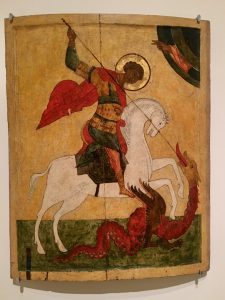
Compare with 19th century painting
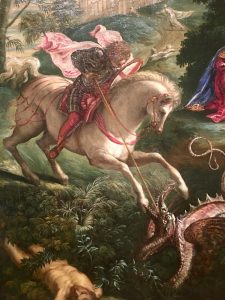
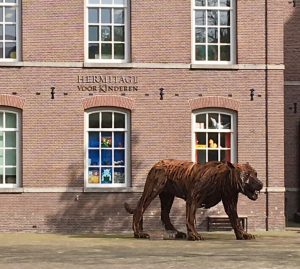
After our visit to the Hermitage we walked over to the Portuguese Synagogue – a late 17th-century Sephardic synagogue completed in 1675.
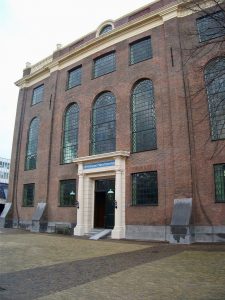
This was one of the largest and richest Jewish communities in Europe during the Dutch Golden age and their very large synagogue reflected this. The wood for the arc was jacaranda from Peru. The synagogue remains an active place of worship. The building is still without electricity and all services are held under candlelight.
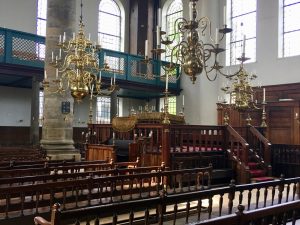
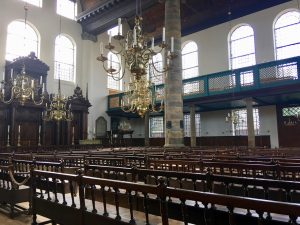
After our tour, we returned to the boat to settle in for dinner and the evening’s entertainment.
